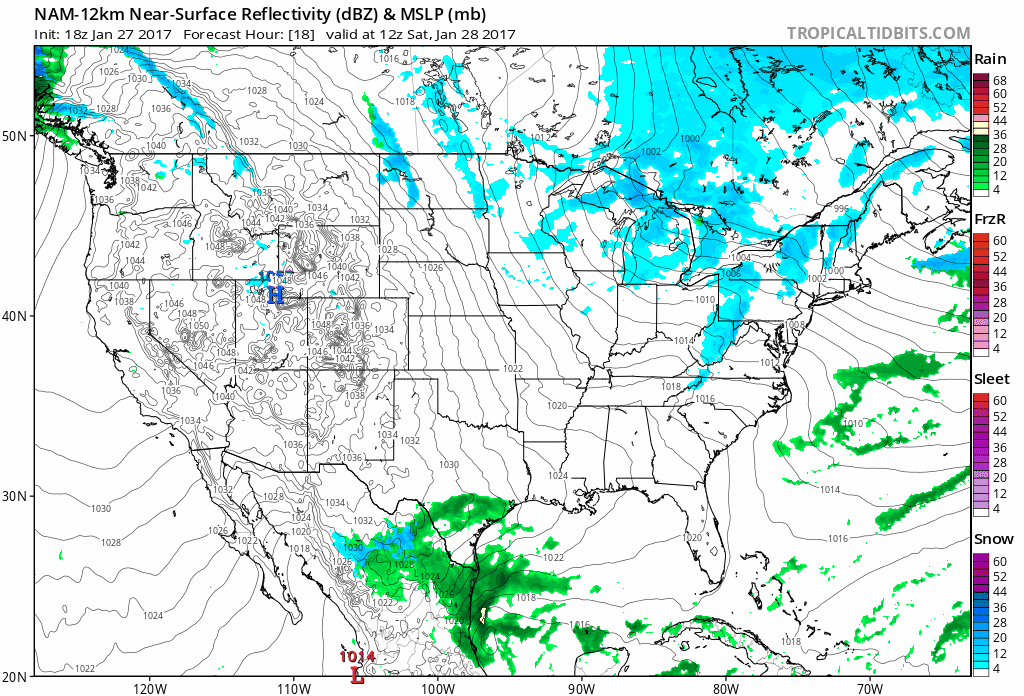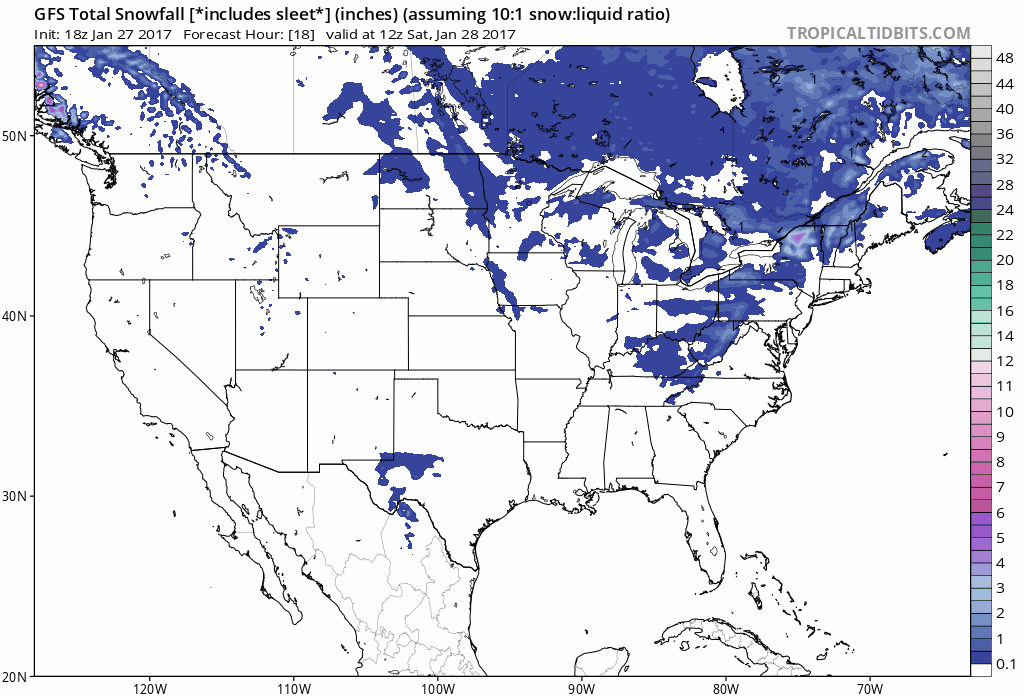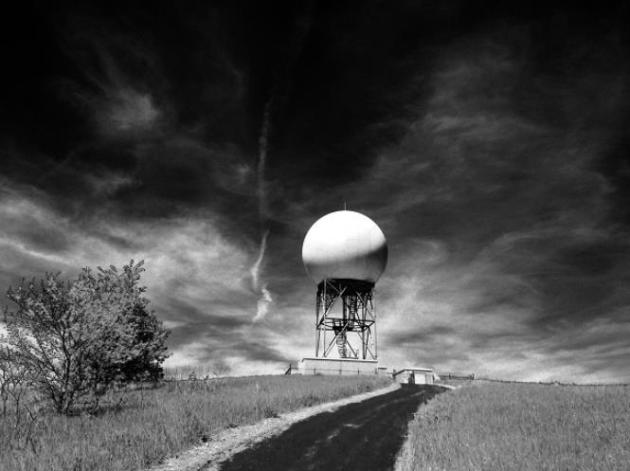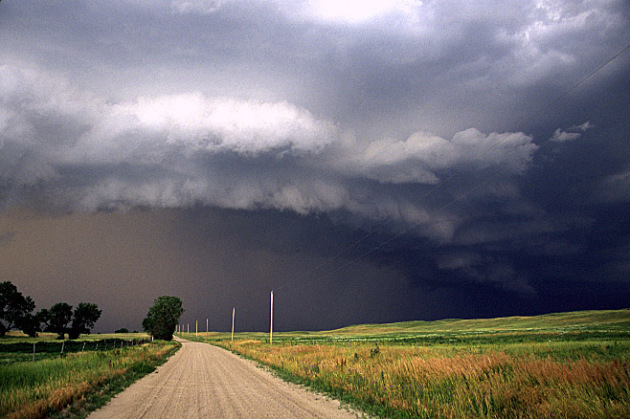31 F. maximum temperature in the Twin Cities Friday.
24 F. average high on January 27.
40 F. high on January 27, 2016.
January 28, 1914: A very rare thunderstorm (for this time of year) is observed at Maple Plain during the evening. Heavy thunder and vivid lightning was observed.
January 28, 1846: Temperatures are not too shabby for a January day. The high in the Twin Cities was 50, which is the normal high for the beginning of March.
Midwinter Weather Siesta – Happy to be “Average”
“Lucky at love, well maybe so. There’s still a lot of things you’ll never know. Like why each time the sky begins to snow, you cry” sang the late, great Dan Fogelberg.
I’ve been known to quietly weep when the sky begins to snow – during rush hour – on 494 – on the drive home. Think of how much time we waste commuting, to do work we could probably do at home.
Dr. Mark Seeley reports January temperatures are running 5-7F warmer than average, in spite of that crunchy subzero shuffle a few weeks back. 17 consecutive months warmer than average at MSP – 9 months in a row, statewide.
For the next week or two tracking Minnesota’s weather will be the rough meteorological equivalent of watching paint dry. I’m OK with that. Any big storms track south, a rag-tag parade of weak Alberta Clippers for us. Starved for moisture, they may spark an occasional coating. Models hint at plowable, 4-inch amounts on Monday from Bemidji to Duluth. That’s as exciting as it gets. Slightly warmer than normal temperatures prevail the next 2 weeks.
I suspect the worst of winter’s chill is behind us now.
January 2017: Another Warmer than Average Month for Minnesota. Here’s an excerpt of Mark Seeley’s Minnesota WeatherTalk: “…As we end the month of January early next week most of Minnesota’s climate observers are reporting mean monthly temperature values that are from 5 to 7 degrees F warmer than normal. For the Twin Cities January marks the 17th consecutive month with above normal temperatures, while on a statewide basis it is the 9th consecutive month of above normal temperatures. Extreme temperature values for the month ranged from -46°F at Cotton (St Louis County) on the 14th to a high of 48°F at several locations over the 18th and 19th. In terms of record-setting daily temperatures, 31 daily record maximum temperature records were tied or set over the warm period from the 17th to the 21st, while over the same period 90 daily warm minimum temperature records were tied or set…”

Lake Effect – Couple of Clippers. The pattern is (relatively) quiet and benign the next few days as lake effect snows slowly shut off downwind of the Great Lakes. A fairly impressive Alberta Clipper brush Minnesota, Wisconsin and Michigan by Monday and Tuesday. The western USA enjoys a rare spell of dry weather until the latter half of next week. 84-hour NAM guidance: NOAA and Tropicaltidbits.com.
Fun With Positive Numbers. My expectations are pretty low in late January and early February, so the fact that the Twin Cities is forecast to stay consistently above 0F for the next 15 days is a small victory. Temperatures run near or even a degree or 2F above average through the period. ECMWF guidance: WeatherBell.

More March Than February. No guarantees this 2-week 500mb (18,000 foot) wind forecast will verify – there never is, but if it does come close much of the USA will be bathed in relatively mild Pacific air; the coldest arctic air pushed well north of the USA. It’s still a volatile, fast-paced pattern and I wouldn’t’ rule out more numbing air, but the odds of record, sustained, day after day of subzero weather drops off fairly quickly by late February.
So Long Exceptional Drought. The recent parade of storms off the Pacific has put a serious dent in the drought. Here’s an overview from AerisWeather meteorologist D.J. Kayser: “This weeks Drought Monitor marks the first time since the March 29, 2011 issuance that there is no exceptional drought anywhere in the U.S. For California, it is the first time since the January 21, 2014 issuance with no exceptional drought in the state. California is also down to only 2.16% of the state under extreme drought this week. The last time they had no extreme drought across the state was the August 6, 2013 issuance.”
Map credit: Aeris Maps Platform.
California Drought Shrinks to Smallest Level in Years After Onslaught of Rain and Snow. Jason Samenow has details at Capital Weather Gang: “A year ago, exceptional drought — the most serious kind — covered 40 percent of California. As of Thursday, following weeks of heavy rain storms and massive dumps of mountain snow, exceptional drought has vacated the state. The intensity and coverage of California’s drought has shrunk dramatically since October when 80 percent of the state was declared a drought area by the U.S. government’s Drought Monitor. Now just about half the state has drought conditions — entirely focused in central and southern California. The Drought Monitor indicated that Northern California was drought-free two weeks ago...” (Map credit: U.S. Drought Monitor).
29 Weekend Tornadoes in Georgia Alone. Meteorologist Dan Lilledahl helped me count up the tornadoes just in Georgia, which is 29 at last report. It validates a total of 50-60 or more across the Deep South last weekend, including Florida. Here are Dan’s comments: “Here’s what I could gather from the other NWS offices that service Georgia:
The Science Behind GOES-16’s Color Composite Imagery. NOAA NESDIS explains why GOES-16 creates a superior “true color” image: “…The composite color images from GOES-16, however, are created by combining data from the satellite’s 16-band Advanced Baseline Imager to produce a range of colors within visible part of the electromagnetic spectrum (think the colors of the rainbow, ROYGBIV). The end product is an image much closer to what a human eye would see from space. Yet, as mesmerizing as GOES-16’s color images are, the fact is that meteorologists don’t always want to view the Earth and its atmosphere this way. This explains why GOES-16 carries an imager with 16 spectral bands as opposed to a camera…”
Floods, Damaging Winds Most Destructive Natural Hazards in 2016. Claims Journal has some statistics about last year’s storms I haven’t seen anywhere else: “At $17 billion, total flood loss in 2016 was six times greater than the overall flood damage experienced in 2015. Five flood-related events in 2016 exceeded $1 billion in losses, including:
- The Louisiana flood in August with losses estimated at more than $10 billion.
- Hurricane Matthew in October with losses estimated at $3 billion.
- As of December 7, the National Flood Insurance Program (NFIP) had received more the 10,000 claims and paid more than $70 million to policyholders and victims in the five-state area.
- The Sabine River Basin flood in East Texas and Louisiana in March with losses estimated at $1.3 billion.
- The Houston flood in April with losses estimated at $1.2 billion.
- West Virginia flash and riverine flooding in June with losses estimated at $1 billion…”
Photo credit: 2016 Louisiana flooding, NOAA Remote Sensing Division.
Only You Can Stop “Vacation Weather Shaming” I do the weather for free because I’m smitten by Mother Nature. They pay me to put up with the abuse. This is the time of year when friends, family and utter strangers share warm weather vacation taunts – there’s more than a little gloating going on. “Paul, it’s Tom in Scottsdale, where it’s a balmy 66 degrees. How’s the weather up in Minnesota?” Click. “Hi Paul, it’s Joan in San Diego, where my 4-year old actually FORGOT how to put on a jacket. Isn’t that PRECIOUS?” Uh huh. Heidi texted me from Cabo, complaining about high winds and rough seas for fishing. “Is your weather app right? Will winds die down?” God help me.My favorite is spring break trips in March. The greater the difference in temperature between Minnesota and the destination – the happier they are. Sad! Hey, we’re thrilled you’re going on a warm weather vacation. Just….keep it to yourself.
Building to the Sky, with a Plan for Rising Waters. The New York Times reports on a growing trend: “…Along coastlines and lake shores and riverfronts across the country, tenants and homeowners, regulators and planners, private developers and public institutions are embracing the accumulating evidence of climate change and fortifying buildings and infrastructure against rising sea levels and ever more intense storms. To an extent that would have been unimaginable before Hurricane Katrina in 2005 and Hurricane Sandy in 2012, resilient design has entered the vocabulary of architects and engineers in parts of the country at risk of inundation…”
Photo credit: “The American Copper Buildings, just right of the Empire State Building, were designed so that tenants could live in their apartments for at least a week if the area floods.” Credit Todd Heisler/The New York Times.
San Francisco At Risk from Seawall Damage in a Major Earthquake. Details via Temblor.net: “The San Francisco Seawall was a key factor in turning San Francisco into the prosperous city it is today. Its construction, which took place from 1879-1916 allowed for tidal marshlands to be turned into the Embarcadero, and over 500 acres of downtown San Francisco. However, the Seawall is at risk from a serious threat, earthquakes. Last July, in a joint venture by GHD and GTC, two engineering consultants, a report on the Seawall’s earthquake vulnerability was prepared for the Port of San Francisco. In it, they highlighted the “greater than expected risk to the Seawall,” and strategies which could be taken to seismically retrofit it. This report, and more, was further highlighted at the 14th Annual Northern California Earthquake Hazards Workshop at NASA this last Tuesday and Wednesday…”
Map credit: “Earthquake probabilities for the Bay Area. The USGS estimates that there is a 72% chance that a M=6.7+ will strike the region by 2043. Such a quake poses significant threats to the San Francisco Seawall.” (Figure from 2016 USGS Fact Sheet on the “Earthquake Outlook for the San Francisco Bay Region 2014–2043”)
3 Republican Governors Embrace Clean Energy’s Economic Promise. Here’s an excerpt from EDF, Environmental Defense Fund: “Last week, the U.S. inaugurated a new president who has vowed to abandon the landmark Paris climate agreement and roll back bedrock American environmental protections.But turn to the states and you’ll find a different story, even in the red states that elected President Trump. In fact, Republican governors in the Midwest are prioritizing economic growth and job creation by accelerating investments in energy efficiency and renewable energy. In the few weeks after the election, leaders in Illinois, Ohio, and Michigan have adopted new policies that help tackle climate change and grow the clean energy economy...”
Americans Overwhelmingly Support Clean Energy. Quartz reports: “…Just 27% of Americans surveyed this month by the Pew Research Center, a think tank, said they thought the US should prioritize expanding the coal, oil, and gas industries, while 65% thought alternatives like wind and solar should be the priority. (The remainder of the 1,502 US adults Pew surveyed didn’t express an opinion.) Those under 50, in particular, leaned toward cleaner forms of energy, with 73% favoring renewables. In the over-50 age group the majority was still in favor of expanding renewables, though by a smaller margin…”
Photo credit: “Which do you back?” (Reuters/Brian Snyder).
Trump Infrastructure Priority Plan Includes Transmission, Wind, Energy Storage. An “all of the above” strategy, including clean renewables? I’m keeping my fingers crossed. Here’s an excerpt from Utility Dive: “…Trump’s infrastructure wish list includes many provisions observers would expect — the document is heavy on the bridges and road projects he promised throughout the campaign would create jobs for Americans. Those in the utility industry who hoped that affinity for big infrastructure projects would translate into power sector programs may take heart in the document released by McClatchy on Tuesday. Just how the Trump administration plans to encourage the projects remains unclear, but it could give an indication of the White House’s priorities. Of the 50 infrastructure projects, seven focus on the electricity sector...”
Tentative Infrastructure Priority List is here.
Big Oil Roars Back. Texas Monthly has the story; here’s an excerpt: “…But as 2017 begins, the outlook is radically different. Prices seem to have stabilized (albeit at half their mid-2014 level), and Donald Trump has tapped two prominent Texans with deep energy-industry ties for his Cabinet. Pending their respective confirmations (which had not been completed when Texas Monthly went to press), ExxonMobil chairman and CEO Rex Tillerson will be our next secretary of state, and former governor Rick Perry will run the Department of Energy. And an almost-Texan—Oklahoma attorney general Scott Pruitt—has been nominated as administrator of the Environmental Protection Agency, where he would likely pursue a pro-oil agenda. After eight years of the cold shoulder, fossil fuels are back in vogue in Washington. “It’s a complete U-turn from the previous administration,” says Craig Pirrong, the director of the University of Houston’s Global Energy Management Institute...”
Illustration credit: Jonathan Bartlett.
Interview with Elon Musk. In a chat with Gizmodo Musk shares his views about pricing carbon and Exxon’s Rex Tillerson at Secretary of State: “…My tweets speak for themselves. Please read them exactly as they are written. Tillerson obviously did a competent job running Exxon, one of the largest companies in the world. In that role, he was obligated to advance the cause of Exxon and did. In the Sec of State role, he is obligated to advance the cause of the US and I suspect he probably will. Also, he has publicly acknowledged for years that a carbon tax could make sense. There is no better person to push for that to become a reality than Tillerson. This is what matters far more than pipelines or opening oil reserves. The unpriced externality must be priced…”
National Archives Vault. It turns out the U.S. Constitution and other priceless documents are protected in a nuclear-bomb-proof vault. Details via Atlas Obscura: “…The original, 55-ton Mosler Vault was the size of walk-in closet and employed a 20-foot scissor jack to raise and lower the Charters of Freedom. A 1953 documentary shows the lift in operation here. The Mosler Vault was replaced in the early 2000s as the National Archive underwent a major $110 million renovation. The current vault, designed by Diebold, is still shrouded in secrecy…” (Image credit: National Archives).
Boeing’s New Spacesuit May Look Stylish, But It’s All Business. Interesting details at WIRED: “…The Boeing Blue is designed for intra-vehicular activity, meaning it’s meant for wearing inside the spacecraft. It offers a measure of protection in the event of a serious problem like sudden depressurization or a fire. Unlike a suit designed for extra-vehicular activity, it can’t shield astronauts from micro meteoroids or keep them from being baked like a potato by solar radiation. They’ll wear it primarily during launches and re-entries, when they face the greatest risk of something going wrong. “The nickname for it in the Apollo era was the ‘get me down quick suit,’ says Nicholas de Monchaux, who wrote Spacesuit: Fashioning Apollo, a book about spacesuit design…”
Photo credit: “Boeing’s new spacesuit will be worn on missions to the International Space Station beginning in 2018.” Boeing.
TODAY: Peeks of sun, milder than average. Winds: NW 10-15. High: 31
SATURDAY NIGHT: Clouds increase. Low: 23
SUNDAY: Clouds and flurries. Winds: NW 10-15. High: 29
MONDAY: Milder with metro flurries, plowable far north. Winds: S 10-20. Wake-up: 22. High: 36
TUESDAY: Mostly cloudy, few passing flakes. Winds: NW 10-20. Wake-up: 27. High: 32
WEDNESDAY: Hello February! Patchy clouds. Winds: NW 10-15. Wake-up: 18. High: 26
THURSDAY: Rare sunshine sighting possible. Winds: NW 7-12. Wake-up: 12. High: 24
FRIDAY: Mix of clouds and sun, “average” temperatures. Winds: NW 5-10. Wake-up: 10. High: 25
Climate Stories…

Essay: Meteorologists and the Sacred Position Betweeen People and Science. The threats are short term and long term. We ignore scientists at our own peril. Here’s an excerpt from The Daily Home: “…Serious scientists and public health leaders, and Pentagon leaders, are gravely concerned about climate change. We fear that the violent storms, floods, droughts, sea level rise and loss of agriculture associated with climate change will cause migrations hundreds of times larger than the displacement from Syria. An important aspect of this is that I really want to acknowledge and to thank meteorologists for very important work and outreach informing the public about weather threats. I would assert that both physicians and meteorologists are in a daunting and sacred position between people and the world of science. In meteorology the systemic disorder is climate heating as a result of climate forcing gases. I worry deeply about the future of my country, about environment and health, about our economy and about our security threats. Some will likely say that it is not meteorologists’ job to report on longer-term and global threats, such as climate. In response here’s a medical story…”

Rain from Thunderstorms is Rising Due To Climate Change. Something I’ve been witnessing for the better part of 15 years, and I’m hardly the only meteorologist tracking these trends. Scientific American has the story: “Across a vast swath of Europe and Asia, rain is increasingly falling in the short, localized bursts associated with thunderstorms, seemingly at the expense of events where a steady rain falls over many hours, a new study finds. The study, detailed Wednesday in the journal Science Advances, directly links this trend to the warming and moistening of the atmosphere caused by rising greenhouse gas levels. The results fit with rainfall trends already observed in the U.S., as well as model predictions that massive rains associated with thunderstorms could become both more frequent and more intense in the U.S. as the world continues to heat up. The shift toward more extreme rains could have implications for water management and flooding because the ground is less able to absorb rainwater when it falls all at once...”
As Climate Change Accelerates, Floating Cities Look Like Less of a Pipe Dream. Here’s an excerpt from The New York Times: “You might call it a Noah’s Ark for an era of melting polar ice sheets. An audacious plan to respond to climate change by building a city of floating islands in the South Pacific is moving forward, with the government of French Polynesia agreeing to consider hosting the islands in a tropical lagoon. The project is being put forward by a California nonprofit, the Seasteading Institute, which has raised about $2.5 million from more than 1,000 interested donors. Randolph Hencken, the group’s executive director, said work on the project could start in French Polynesia as early as next year, pending the results of some environmental and economic feasibility studies...”
Image credit: “A rendering of the artificial floating island project in French Polynesia. The project is being put forward by a California nonprofit, the Seasteading Institute, which has raised about $2.5 million from more than 1,000 interested donors.” Credit Seasteading Institute
Trump’s Move to Clamp Down on Communications Spurs Backlash. The Wall Street Journal reports: “…An Environmental Protection Agency spokesman denied media reports from earlier this week that Mr. Trump’s administration was going to imminently delete the EPA’s website on climate change. Meanwhile, incoming Trump officials at agencies including the Interior Department, Agriculture Department and the EPA have demanded a cessation of certain public communication, prompting outcries from some congressional Democrats and progressive interest groups. With nearly seven days under Mr. Trump’s belt as president, many experts say the new administration’s moves aren’t that different from past transitions of power. What has changed, some say, is a rapid-fire social-media scene and a new president facing opposition not seen in decades…”
Trump Sparks Fear of War on Science. Here’s an excerpt from TheHill: “…The Associated Press reported Thursday that advisers have eyed a two-thirds reduction in the agency’s staffing, a possibility that would upset the EPA’s mission and one that has unnerved federal employees. Those moves come in contrast to the strategy employed by the George W. Bush administration, which used appropriations to pump funding into federal science programs, according to Matt Owens, the vice president for federal relations and administration at the Association of American Universities. Bush oversaw a doubling of the National Institutes of Health budget, an expansion of interagency research activities and a bump up in budgets at the National Science Foundation and the Energy Department, Owens noted…”
Exxon Praises “Monumental” Paris Agreement in Signal to Trump. Call me crazy but this is a pretty big deal. Bloomberg has the story: “Exxon Mobil Corp., the U.S. oil giant that’s facing investigations over what it knew and when about climate change, sees the Paris agreement to mitigate global warming as a “monumental” achievement, according to a top executive. The company supports the December 2015 Paris accord as a “very meaningful and constructive process,” William M. Colton, Exxon’s vice president for corporate strategic planning, said in an interview in Berlin on Wednesday. Adhering to the accord’s commitments are achievable and compatible with Exxon’s business strategy, he said. President Donald Trump’s pick for secretary of state, former Exxon Chief Executive Officer Rex Tillerson, cleared a key confirmation hurdle Tuesday in Washington, overcoming objections that his appointment would threaten climate-change efforts…”
Photo credit: “An Exxon gas station in Richmond, Kentucky.” Photographer: Luke Sharrett/Bloomberg.
We May Be Closer Than We Thought to Dangerous Climate Thresholds. Dr. John Abraham at the University of St. Thomas reports for The Guardian: “…When you use the recommended time period, it turns out that 2015 was the first year on record that passed the 1°C (1.8°F) mark. It means that 2016 was approximately 0.1°C (0.2°F) warmer than we had thought relative to the pre-industrial time period. To put this in perspective, it is almost an extra decade of warming. Why does this matter? Well it means that we have about a decade less time to act on climate change if we are going to avoid the most serious consequences. It means we simply have no time to waste, and no room for error. It also means that even if we take action right now, there will be consequences. That said, it is better in the long run to act now than to wait. The people denying or delaying action are costing us, and our future generation much in terms of financial, social, and human capital...” (File image: University of Wisconsin – Madison CIMSS).
Good Luck Silencing Science. Here’s an excerpt from techcrunch.com: “…There’s a word for that — a word frequently misused these days, but the correct word in this case: censorship. Unfortunately for the would-be censors, the days when that sort of thing worked are long past. The Streisand effect has for years proven the stronger force than even the most dedicated of information wranglers. But it won’t even get to that stage. You can’t just tell science to shut up. Climate change in particular is a nasty one to try to put to bed. It’s taken decades of research by thousands upon thousands of scientists all over the globe to arrive and strengthen the theory (in the sense that gravity and evolution are also theories) of anthropogenic climate change, or global warming if you prefer. (A climatologist I spoke to likes “global weirding.”)…”

